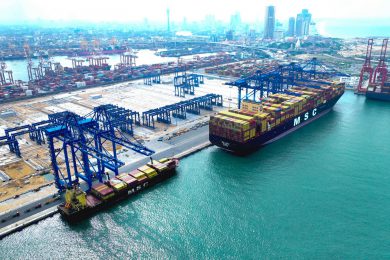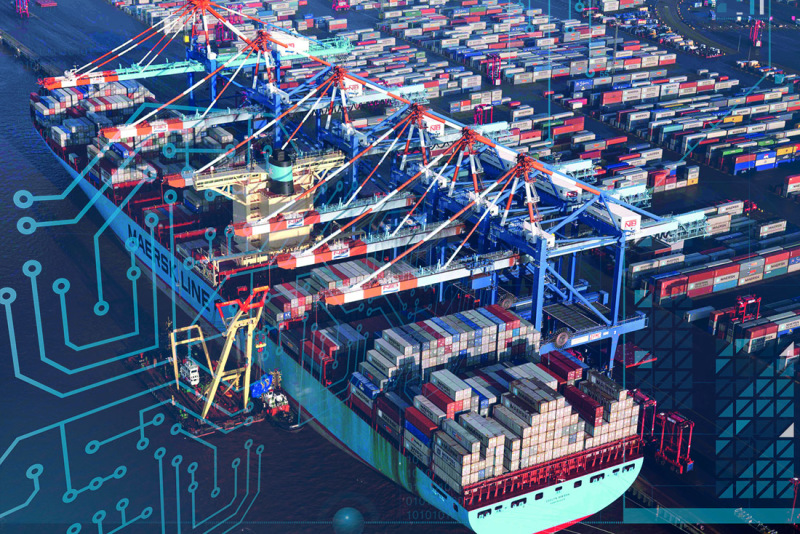The pandemic caused many changes and hiccups within the U.S. economy, including several supply chain issues. While things are slowly getting back to normal, there are still some supply chain problems that companies across the country are trying to overcome.
If there was one “positive” to the pandemic, however, it pointed out flaws and vulnerabilities in the chain. It’s up to shipping and freight professionals to learn how to fill in those gaps by utilizing technology, so these major issues don’t happen again.
AI (Artificial Intelligence) is a promising technology that can make supply chains more resilient. Let’s take a look at how it’s currently impacting shipping and logistics, and how shipping professionals should be using it to their advantage.
Supply Chain Problems During the Pandemic
Most people know that the COVID-19 pandemic caused supply chain issues, but fewer understand why.
During the height of the pandemic, so many businesses stopped production or shut down completely, that entire industries came to a halt. When there’s not enough product, there’s no need for shipping.
Unfortunately, that caused many freight workers to lose their jobs, as well, which created even bigger gaps in the supply chain.
Finally, there was a great shift in supply and demand throughout the pandemic. Let’s not forget about things like toilet paper hoarding and stocking up on certain foods during the early stages of COVID-19.
With people spending more time at home, the demand for certain products grew rapidly, and both manufacturers and shippers had a hard time keeping up.
If you’re still feeling the lingering effects of COVID-19, it’s important to look toward the future and understand how technology can help – especially when it comes to implementing AI.
Risk Management for truckers
One of the biggest benefits of using AI is the data it provides. It allows businesses to optimize their research and make changes more efficiently by recognizing patterns and pointing out areas of improvement.
AI can also automate tasks typically done by workers, reducing the risk of human error and speeding up the shipment process. Using artificial intelligence can even take some of the heavy load off drivers. Long-haul truck drivers already work about 50% more hours than the average American worker. The supply chain issues triggered by the pandemic have made those hours even more grueling.
Not only is that dangerous for everyone on the road (and the companies employing the truckers), but it can also take a toll on the health of those workers, causing problems like:
• Heart disease
• Sleep apnea
• High cholesterol
• Hypertension
Driver safety has been a hot topic in the promotion of autonomous vehicles. Currently, AI is being used as a diagnostic tool to detect problems in freight vehicles that could impact performance. Eventually, self-driving trucks will be the norm, which will reduce driver error and improve fuel efficiency.
Keep in mind that AI isn’t meant to replace the role of humans in this industry. However, many manufacturers and shipping companies are struggling to find workers, creating more delays and hiccups in the supply chain. AI can supplement the current workforce, streamline certain tasks, and make things safer for your employees who are already being overworked and might be on the verge of burning out, both in warehouses and on the road.
The Sustainability of Artificial Intelligence
While the pandemic seemed to be the only thing people were talking about for over two years, other hot-button issues haven’t gone away – including climate change and the need for greater sustainability.
When people think of the shipping and freight industry, sustainability usually isn’t the first thing to come to mind. However, implementing new technologies, including AI, can become a leading industry in fighting back against climate change and carbon emissions.
As long as you’re willing to consider the data being provided and use it to optimize your business, you might find it easier to be sustainable while saving money and prioritizing worker wellness.
By utilizing AI in your workplace management, you can support more sustainable practices, including:
• Reduced waste
• More efficient scaling
• Data-driven decisions
• Improved employee productivity
Additionally, AI can optimize shipping routes, whether you’re using people to get your deliveries from point A to point B or you make the switch to automated vehicles in the future. Route optimization will predict the best possible paths.
This will help to decrease fuel consumption and improve productivity while cutting down on shipment times. It will also extend the life of your fleet vehicles by reducing the wear and tear caused by overuse.
These points are just the tip of the iceberg when it comes to how AI is impacting shipping and logistics in a post-pandemic world. The holes in the system have been pointed out, and the only way to fix them moving forward is to use technology to your advantage as a freight business.
The more logistics companies that get on board with the use of AI, the fewer shipping disruptions we’ll experience in the future, no matter the circumstances.
Source: Shipping and Freight Resource
Disclaimer: The views and opinions expressed in this article are those of the authors and do not necessarily reflect the official policy or position of the publisher























